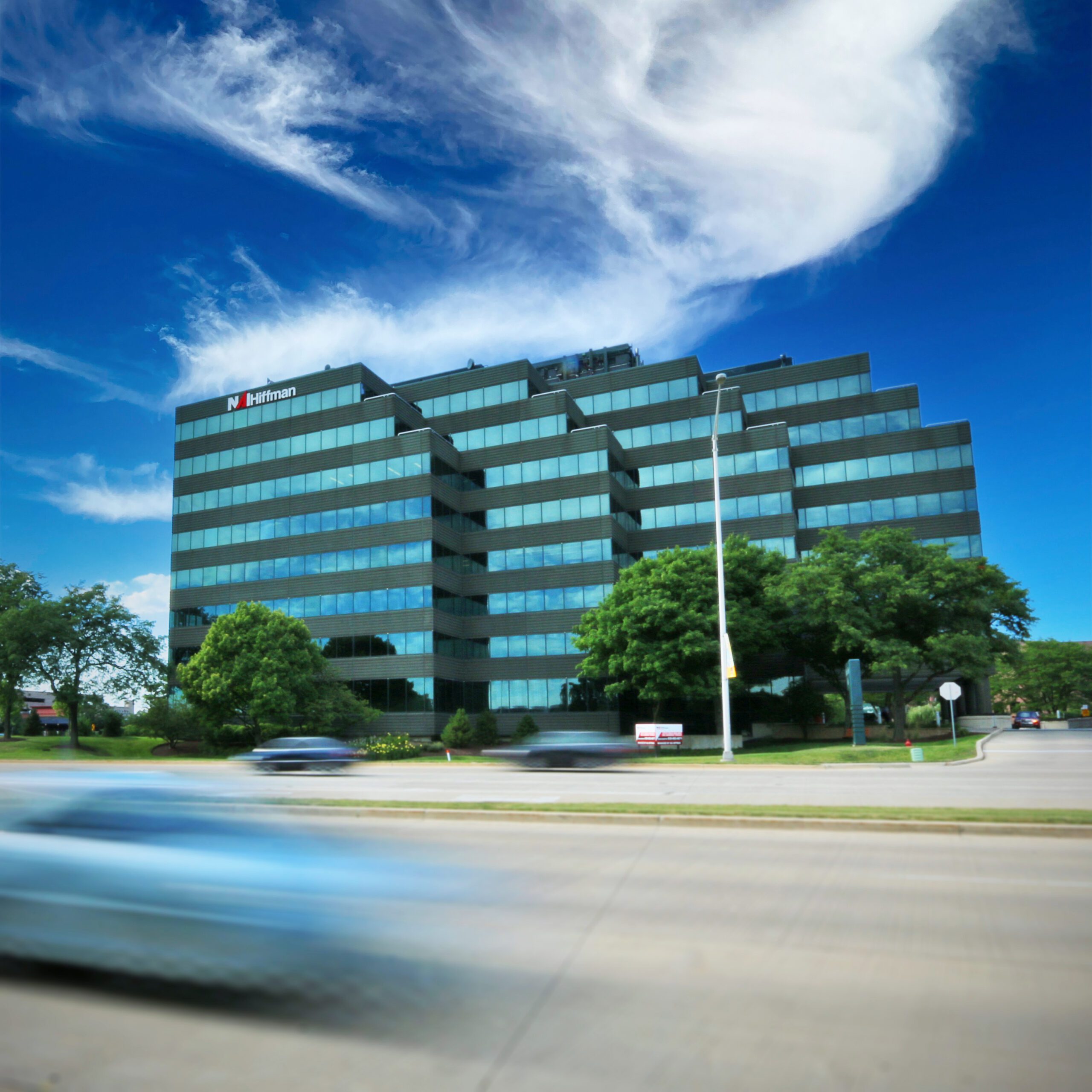September 2024
Industrial Developers Think Outside the Big Box

From the Fall 2024 Issue of NAIOP Development Magazine – By Emily Johnson
Changing market conditions have warehouse sizes trending downward.
When it comes to what’s new in warehouses, more developers and users are thinking outside the big box. After a recent building frenzy of larger industrial properties — many of them exceeding 1 million square feet — rising costs, record construction completions and shifting supply chains are driving demand for smaller footprints of 500,000 square feet or less.
Mega-leases exceeding 500,000 square feet were prominent from 2020 through 2022 but slowed in 2023, leading developers to shift focus to buildings in the 100,000- to 300,000-square-foot range, according to Cushman & Wakefield. The national brokerage firm also reported that more than 60% of the total under-construction pipeline in 2024 is concentrated in buildings under 500,000 square feet.
In this article, Kelly Disser, executive vice president, industrial, at NAI Hiffman; Brian Netzky, managing principal of Glenstar Logistics; Susan Bergdoll, senior vice president and partner for CRG’s Midwest region; and Robert Smietana, president and CEO of HSA Commercial Real Estate, discuss the phenomenon of smaller footprints and other ways that industrial facilities are responding to changing market demands.
How has the design of industrial facilities evolved in response to current market conditions?
Kelly Disser: Developers have shifted to a more conservative approach. At the start of Q2 in metropolitan Chicago, only 55.3% of active industrial construction projects were being built on a speculative basis, according to NAI Hiffman’s Q1 2024 Construction Pipeline Report. With leasing velocity moderating, many developers are now waiting for a major tenant commitment before breaking ground on new projects. This is a stark contrast from two years ago, when nearly 80% of new industrial development in Chicagoland was being built on a speculative basis.
Brian Netzky: A few years ago, 1 million-square-foot boxes were being built all over the country. Tenants are now taking more time to find the optimal location, property and functionality for their business needs, and currently, that includes smaller space. In response, Glenstar Logistics is developing industrial parks with flexible space options, outdoor storage, abundant parking and room for semitrucks to circulate.
Susan Bergdoll: Clients want next-generation industrial buildings incorporating sustainability features, access to major transportation hubs and state-of-the-art design. The demand for logistics facilities with maximum clear heights, ample dock doors, substantial power and trailer storage has increased, driven by the shift toward consumer-centric logistic strategies.
Robert Smietana: We tailor our designs to the types of tenants we expect to attract. For example, this year we completed the two-building Terminus at Hobbs Station near the Indianapolis International Airport with higher-end finishes and abundant electric power, which appeals to the manufacturing and tech industries. In southeast Wisconsin, we have built campuses with room for tenants to expand. For instance, HARIBO will be nearly tripling its warehouse space in Bristol to approximately 450,000 square feet.
What’s driving the demand for smaller spaces, and what solutions do they provide?
Disser: I’ve seen continued demand from tenants interested in smaller infill buildings. Uses include assembly, support for service businesses, recreation such as a trampoline park, food storage, last-mile fulfillment, and repair and maintenance for various industries.
Netzky: Whether it’s a larger corporation using a hub-and-spoke strategy or a smaller company that simply likes the location and access, offering them options is important. Our new Tri-County 75 park in Fort Myers, Florida, includes four industrial buildings ranging from 76,210 to 404,050 square feet. The campus is 88% leased to a variety of tenants, from a local HVAC and roofing supplier to Fortune 500 food and beverage companies. However, we still see a need for big boxes in certain markets. At Cherokee Commerce Center 85 in Gaffney, South Carolina, we’re constructing a speculative cross-dock 555,520-square-foot facility that’s expandable to 1.3 million square feet, and we’re talking to users seeking anywhere from 100,000 to the full 1.3 million square feet for that space.
Bergdoll: Retailers are increasingly focused on storing products closer to high-density population centers, crucial port markets and primary logistics corridors. The influence of e-commerce giants like Amazon underscores the necessity for retailers to maintain inventories near consumers, prompting a trend toward onshoring and nearshoring of manufacturing operations. This shift has intensified the scarcity of land in core markets, making smaller infill locations more attractive.
Smietana: Our building sweet spot is now in the 300,000- to 500,000-square-foot range. It’s risky to build something larger right now, as interest rates and vacancy rates have both doubled over the past few years. This medium size can still be a multitenant building to diversify the rent roll and mitigate risk. At Gateway Business Park in southwest Indianapolis, we have leased warehouse space to tenants across industries ranging from pharmaceutical and biomedical to automotive and food service. Many of these companies employ highly skilled workers who desire more amenities and want to be near retail and restaurant options.
Where are these smaller facilities commonly located?
Disser: Smaller buildings with high occupancy are generally located in densely populated areas with a diverse labor base and near major transportation arteries. In most cases, it is cost-prohibitive to build new buildings that are less than 100,000 square feet, so the supply of those facilities remains constant, if not decreasing, due to redevelopments and assemblages.
Netzky: We like locations near major transportation routes but not in highly congested areas. For example, our Tri-County 75 industrial park is 15 minutes north of Southwest Florida International Airport at the four-way interchange of Interstate 75 and Luckett Road, so it has easy highway access but is also away from the densest areas.
What new challenges have you faced with such projects, and how did you address them?
Disser: For our team, leasing and sales activity in the first quarter of 2024 was a bit slower but rose significantly in the second quarter. We are hopeful this trend continues and spreads into transactions for larger blocks of space throughout the Chicagoland industrial market.
Netzky: Rising interest rates, slower demand and high construction costs have been a challenge. We have overcome this in Fort Myers thanks in part to the region’s phenomenal rent growth. We foresee high demand for modern industrial space throughout the Southeast due to substantial population gains, which will command rents that offset high building and borrowing costs.
Smietana: We have been in a tight lending environment for the past two years, so we are relying on our relationships with capital partners to pursue lower-leveraged investments that will face less competition upon delivery due to limited construction. Small- and medium-size projects are easier to finance and can be completed on a shorter timeline, which benefits both landlord and tenant.
Please describe a current project that fits the smaller buildings trend.
Disser: We’re experiencing robust leasing activity for industrial spaces less than 150,000 square feet in suburban Chicago. For instance, in the second quarter, we completed several leases ranging from 15,000 to 130,000 square feet. We also repped the sales of a 5-acre industrial site in Romeoville and two 10,000-square-foot industrial buildings in Carol Stream and Lombard.
Netzky: At Cherokee Commerce Center 85, our site is flexible to meet the needs of more tenants, and the property profile sets it apart. Located between Greenville-Spartanburg to the south and metro Charlotte to the north, the 290-acre business park is in a strategic location with easy highway access, robust power, low taxes and abundant labor. The campus plan calls for five buildings ranging from 211,640 to 1.6 million square feet.
Bergdoll: The Cubes at ORD is a 66,552-square-foot speculative industrial project in one of Chicago’s most supply-constrained submarkets — the area around O’Hare International Airport. Slated for completion in fourth-quarter 2024, it offers Class A space with features like ESFR sprinkler systems, high-efficiency LED lighting, numerous dock doors, and ample trailer and vehicle parking, meeting the needs of small and midsize users in a strategic location. The facility represents one end of the size spectrum across which CRG develops; we are still pursuing projects of 1 million square feet or more if the fundamentals are strong enough.
Smietana: Terminus at Hobbs Station comprises two speculative cross-dock warehouses in Plainfield, Indiana. We recently leased one of the buildings upon completion to a large manufacturer. The 497,540-square-foot development is 3 miles from Indianapolis International Airport, the country’s eighth-largest freight airport and home to FedEx’s second-largest U.S. distribution hub. It is also situated near Interstate 70, with quick access to the region’s interstate system, putting more than 40 major metropolitan areas — or 75% of the U.S. population — within an eight-hour drive.
Click here to read the story from NAIOP.
About Hiffman National:
Based in the Chicago area, with an additional five regional hubs and 30 satellite offices, Hiffman National provides superior property management, project services and accounting services to a diverse portfolio including office, medical office, retail and industrial properties nationally. The firm’s comprehensive property management platform and attentive approach to service contributes to client NOI and has helped the firm to more than double in size in five years. Hiffman National is an award-winning company with more than 250 employees strategically located throughout North America.
About NAI Hiffman:
NAI Hiffman is one of the largest independent commercial real estate services firms in the US, with a primary focus on metropolitan Chicago, and part of the NAI Global network. We provide institutional and private leasing, property management, tenant representation, capital markets, project services, research, and marketing services for owners and occupiers of commercial real estate. To meet our clients’ growing needs outside of our exclusive NAI Hiffman territory, we launched Hiffman National, our dedicated property solutions division, which provides property management, project services, and property accounting services across the country. NAI Hiffman | Hiffman National is and award winning company headquartered in suburban Chicago, with more than 250 employees strategically located throughout North America.


